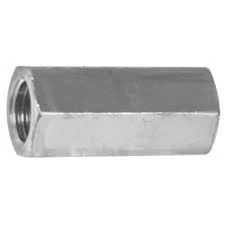-
Cangzhou Yulong Steel Co., Ltd.
-
Phone:
+86 13303177267 -
Email:
admin@ylsteelfittings.com
- English
- Arabic
- Italian
- Spanish
- Portuguese
- German
- kazakh
- Persian
- Greek
- French
- Russian
- Polish
- Thai
- Indonesian
- Vietnamese
- Zulu
- Korean
- Uzbek
- Hindi
- Serbian
- Malay
- Ukrainian
- Gujarati
- Haitian Creole
- hausa
- hawaiian
- Hebrew
- Miao
- Hungarian
- Icelandic
- igbo
- irish
- Japanese
- Javanese
- Kannada
- Khmer
- Rwandese
- Afrikaans
- Albanian
- Amharic
- Armenian
- Azerbaijani
- Basque
- Belarusian
- Bengali
- Bosnian
- Bulgarian
- Catalan
- Cebuano
- China
- China (Taiwan)
- Corsican
- Croatian
- Czech
- Danish
- Esperanto
- Estonian
- Finnish
- Frisian
- Galician
- Georgian
- Kurdish
- Kyrgyz
- Lao
- Latin
- Latvian
- Lithuanian
- Luxembourgish
- Macedonian
- Malgashi
- Malayalam
- Maltese
- Maori
- Marathi
- Mongolian
- Myanmar
- Nepali
- Norwegian
- Norwegian
- Occitan
- Pashto
- Dutch
- Punjabi
- Romanian
- Samoan
- Scottish Gaelic
- Sesotho
- Shona
- Sindhi
- Sinhala
- Slovak
- Slovenian
- Somali
- Sundanese
- Swahili
- Swedish
- Tagalog
- Tajik
- Tamil
- Tatar
- Telugu
- Turkish
- Turkmen
- Urdu
- Uighur
- Welsh
- Bantu
- Yiddish
- Yoruba

Nov . 10, 2024 16:43 Back to list
Understanding Specifications for 4 Inch Pipe Flanges in Piping Systems
Understanding the 4-Inch Pipe Flange A Comprehensive Guide
Flanges are crucial components in piping systems, serving as mechanical features that allow for connection, support, and the ability to withstand high pressures and temperatures. Among the various types of flanges used in industry, the 4-inch pipe flange holds significant importance due to its versatility and prevalent usage. This article explores the composition, applications, types, and considerations of 4-inch pipe flanges.
Composition and Standards
A 4-inch pipe flange is designed to fit a pipe with a nominal diameter of four inches. In terms of dimensions and specifications, these flanges may conform to different standards, including ANSI (American National Standards Institute), ASME (American Society of Mechanical Engineers), and DIN (Deutsches Institut für Normung). For instance, ANSI/ASME B16.5 is a common standard that provides dimensions for flanges and specifies their pressure-temperature ratings.
Pipe flanges are typically made from various materials, including carbon steel, stainless steel, and sometimes plastic or alloy materials. The choice of material depends on the specific application, including factors such as temperature, pressure, and the nature of the conveyed fluid.
Types of 4-Inch Flanges
4-inch flanges come in several types, each catering to different installation and operational requirements
1. Flat Welding Flange This type is welded directly to the pipe, providing a strong bond and reliable seal. It is commonly used in high-pressure applications.
2. Blind Flange Used to close the end of a piping system, blind flanges have no bore and help maintain system pressure or act as a temporary seal during repairs.
3. Slip-On Flange This flange slides over the pipe and is welded at the top and the bottom. It is easier to install and align, making it suitable for low-pressure applications.
4 inch pipe flange

4. Socket Weld Flange Designed for smaller pipes (usually up to 2.5 inches), these flanges create a strong connection through an internal fillet weld.
5. Lap Joint Flange This flange requires a stub end and allows for easy alignment and disassembly, often used in systems where maintenance access is necessary.
Applications
4-inch pipe flanges are prevalent across various industries. They are commonly found in
- Oil and Gas Used in pipelines for transporting oil, gas, and other fluids, ensuring leak-tight connections. - Water Treatment In treatment plants, flanges connect sections of large pipe systems to convey treated and untreated water. - Chemical Processing They are used to connect pipes that handle various chemicals, requiring robust material to withstand corrosive substances. - HVAC Systems In heating, ventilation, and air conditioning systems, flanges connect ductwork and piping, ensuring efficient airflow and seal.
Installation Considerations
Proper installation of 4-inch pipe flanges is critical to avoid leaks and ensure system integrity. Here are some key considerations
- Alignment Flanges must be aligned correctly to prevent stress on the connections, which can lead to leaks or failure over time. - Gasket Selection The selection of the appropriate gasket material is vital for ensuring a reliable seal. Factors like temperature, pressure, and the type of fluid must be considered. - Bolting The tightening of bolts connecting the flanges should be done uniformly to maintain an evenly distributed load, thus preventing warping or damage.
Conclusion
The 4-inch pipe flange is an essential component in numerous applications, providing the means for secure and effective connections in piping systems. Understanding the types, materials, and proper installation techniques will greatly influence the performance and longevity of these systems. As industries continue to evolve, the importance of reliable flange connections will remain paramount in ensuring operational efficiency and safety.
Latest news
-
ANSI 150P SS304 SO FLANGE
NewsFeb.14,2025
-
ASTM A333GR6 STEEL PIPE
NewsJan.20,2025
-
ANSI B16.5 WELDING NECK FLANGE
NewsJan.15,2026
-
ANSI B16.5 SLIP-ON FLANGE
NewsApr.19,2024
-
SABS 1123 FLANGE
NewsJan.15,2025
-
DIN86044 PLATE FLANGE
NewsApr.19,2024
-
DIN2527 BLIND FLANGE
NewsApr.12,2024
-
JIS B2311 Butt-Welding Fittings LR/SR 45°/90° /180°Seamless/Weld
NewsApr.23,2024











